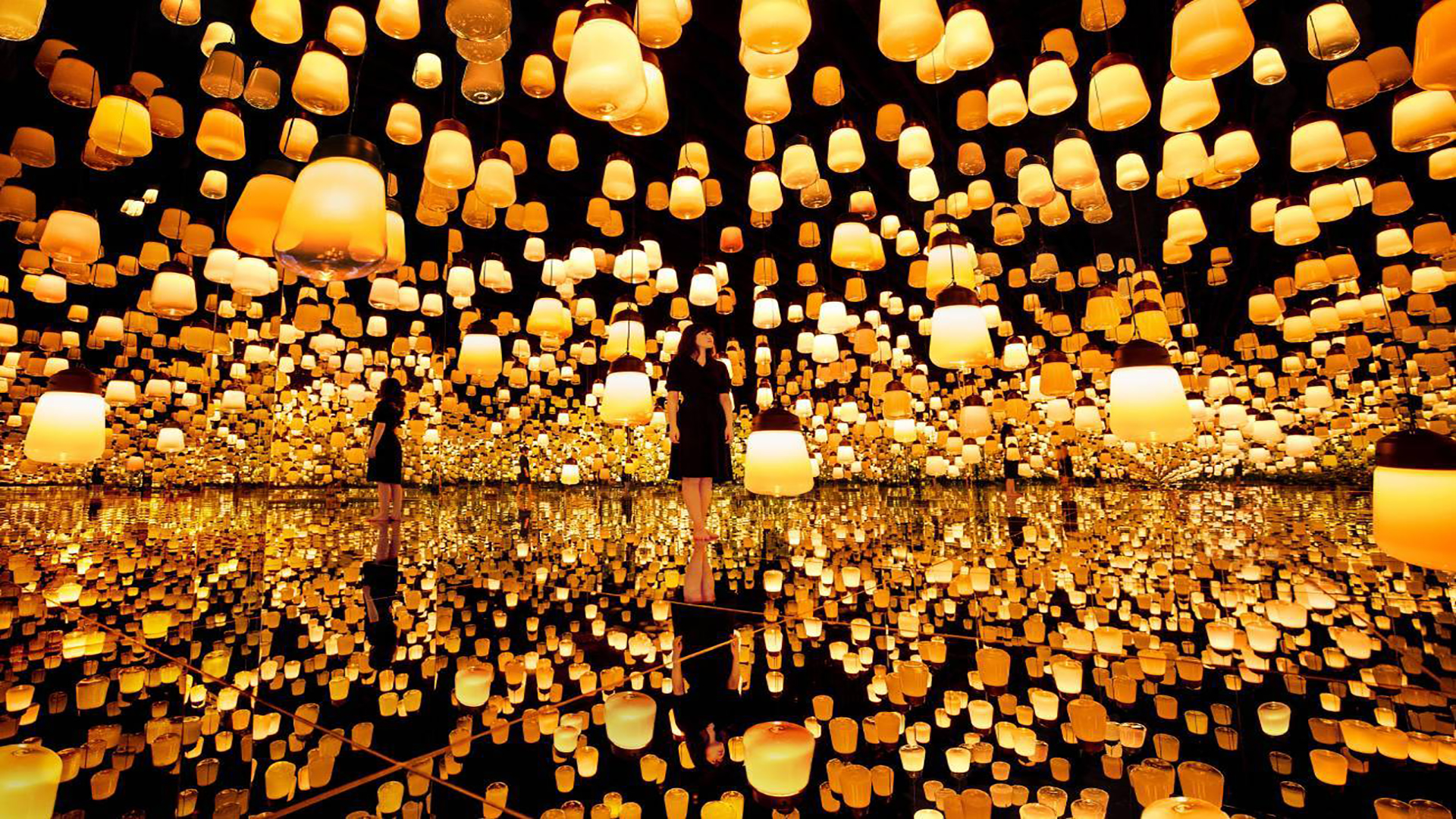teamLab wants to fundamentally change people’s beauty standards. This may sound like a lofty goal for an art collective of so-called ultra-technologists, but having guided millions through its immersive digital exhibitions since launching in 2001, ambition comes with the territory — and in high-definition.
By the collective’s own admission, any such conceptual shift may rest “30 to 50 years” into the future, even still, the pathway it presents is electrifyingly clear; dissolve the boundary between viewer and exhibition, and explore new relationships between humans and the world. To date, teamLab’s existence has been international in scope and peripatetic in movement, converting remote hot springs, London art galleries, and Japanese castles into color-drenched spectacles.
In the era of experiential art destinations, typified by the likes of the Museum of Ice Cream, teamLab’s exhibitions promise more than an array of kaleidoscopic backdrops for your next social media post. Their borderless exhibitions are created by hundreds of computers and projectors that react in real-time to the movements and actions of visitors. The result is an immersive experience that encourages “people to think of other viewers as a positive influence.”
Though teamLab claims to focus on neither country nor culture, it has been remarkably attentive to China in recent years and has staged more than a dozen installations on the mainland since 2016, a period that coincides with the explosion of cultural consumption across China’s metropolises. Its latest edition is teamLab Borderless Shanghai, teamLab’s first permanent space in the country and a shot at achieving enduring success in potentially the world’s most lucrative cultural marketplace.
“We have always wanted to create a permanent museum [in China],” said teamLab, who conduct interviews as a collective. “Shanghai is one of the most culturally powerful and active cities in the world and we hope to make teamLab Borderless Shanghai into a place people in the far future will look back and consider the start of a new age of humanity.”
Tellingly, teamLab’s Shanghai venture has mounted monumental work to match such colossal aspirations. Its hugely popular “Forest of Lamps,” a sea of dangling lanterns that illuminate in reaction to a viewer’s movements, has been recreated at 1.5 times the size of the Tokyo version. The group is also debuting a large-scale work of innumerable moving vehicles and an installation of more than 1,000 restless lights — all inside an intricate, three-dimensional, interconnected exhibition space that give substance to its fundamental idea of hosting “borderless” exhibitions.
Chinese museums welcomed an astounding 1.1 billion visitors in 2018. While visits to large-scale provincial museums prop up such numbers, in part driven by free admission and mandatory school trips, a generation of young culturally-curious Chinese are simultaneously flooding the nation’s private art institutions. Playful, photogenic, and contemporary are the flavors of the day with exhibitions by optical illusion artist Leandro Erlich and Daniel Arsham, a contemporary American artist, receiving mass attention this year in Beijing and Shanghai respectively. In this light, teamLab’s digitally engaging offerings seem uniquely suited to the demands of today’s cultural consumer.

teamLab will also open an exhibition at The Venetian Macao in January 2020. Image: teamLab, Title TBA, 2019, experimental photo of the new artwork © teamLab
For Bonnie Zhang, who joined the throngs of urban scenesters lining up for the 2017 teamLab showing at Pace Gallery in Beijing’s 798 Art District, the appeal was obvious. “Traditional art exhibitions require the audience to understand the painter, art theory, and background knowledge. But an exhibition like this can be seen and understood by everyone.” For today’s generation of Chinese who have limited previous exposure to Western art, the new relationship between viewer and artwork proposed by the art collective understandably makes a gallery visit less intimidating. An open mind (and perhaps a cell phone) are the only requirements.
Another factor that has seen teamLab’s recent installations in Guangzhou, Shanghai, and Wuhan well-received was social media. “My first impression was that the exhibition was very novel,” says Zhang, who brought a friend after buying tickets on an App called VART. “In fact, most people are not concerned with the content of the exhibition. The thing I cared about was how to take good photographs and then post them on social media.”
For its part, teamLab understands and encourages this element of its appeal: “We have no problem with visitors wanting to share their experience with others through social media. We enjoy seeing how excited our guests are through their posts.”
It’s easy to deride teamLab exhibitions as a trending fad, to dismiss the art on offer as casually as a swipe on social media. But teamLab’s decision to open a permanent exhibition in China evidences a confidence in the longevity of its model, one built from nearly 20 years of experience. Immersive exhibitions have become an integral component in the diet of Chinese culture lovers and are here to stay. Fitting then, that the teamLab exhibition is located at the heart of Shanghai’s blossoming art district on the banks of the Huangpu River.
Video & Image Credit: teamLab, Exhibition view of teamLab Borderless Shanghai, 2019, Shanghai (c) teamLab
teamLab is represented by Pace Gallery



